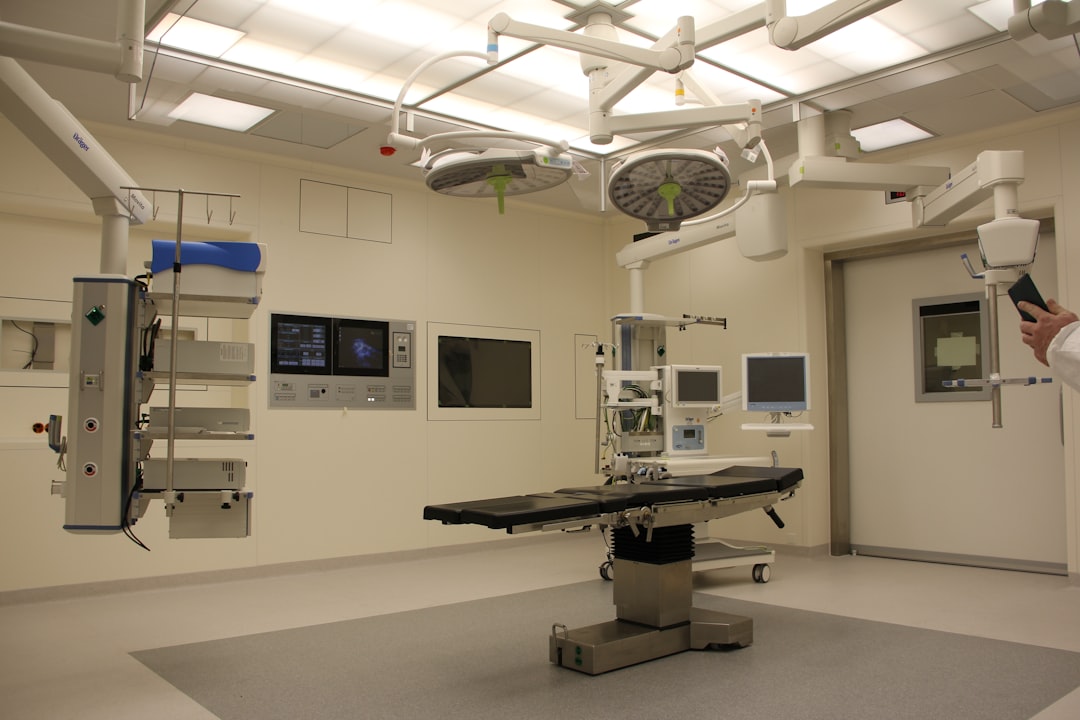NVIDIA has long been at the forefront of graphics processing technology, but its foray into deep learning has transformed the landscape of artificial intelligence. Deep learning, a subset of machine learning, utilizes neural networks with many layers to analyze vast amounts of data, enabling machines to learn from experience. NVIDIA’s deep learning frameworks and hardware have become essential tools for researchers and developers alike, facilitating breakthroughs across various domains.
The company’s GPUs, particularly the Tesla and A100 series, are engineered to handle the immense computational demands of deep learning tasks, making them indispensable in trAIning complex models. The synergy between NVIDIA’s hardware and software ecosystems has led to the development of powerful libraries such as CUDA, cuDNN, and TensorRT. These tools not only optimize performance but also simplify the implementation of deep learning algorithms.
As a result, NVIDIA has positioned itself as a leader in AI research and application, providing the necessary infrastructure for innovations that were once thought to be the realm of science fiction. With a commitment to pushing the boundaries of what is possible, NVIDIA continues to drive advancements in deep learning that are reshaping industries and enhancing our daily lives.
Key Takeaways
- NVIDIA Deep Learning is a powerful tool for accelerating computer vision, enhancing speech processing, advancing autonomous driving, and revolutionizing medical imaging.
- Computer vision is greatly accelerated with NVIDIA Deep Learning, allowing for faster and more accurate image recognition and object detection.
- NVIDIA Deep Learning enhances speech processing by enabling more accurate and natural language understanding and generation.
- Advancements in autonomous driving are made possible with NVIDIA Deep Learning, allowing for improved perception, decision-making, and control systems.
- Medical imaging is revolutionized with NVIDIA Deep Learning, enabling more accurate and efficient diagnosis and treatment planning.
Accelerating Computer Vision with NVIDIA Deep Learning
Computer vision has emerged as one of the most exciting applications of deep learning, and NVIDIA is at the helm of this revolution. By leveraging its powerful GPUs, NVIDIA enables developers to create sophisticated models that can interpret and understand visual data with remarkable accuracy. From facial recognition systems to autonomous drones, the applications of computer vision are vast and varied.
The company’s deep learning frameworks allow for rapid training of convolutional neural networks (CNNs), which are particularly effective in image classification tasks. One notable example is NVIDIA’s use of deep learning in real-time object detection. By employing advanced algorithms like YOLO (You Only Look Once) and SSD (Single Shot MultiBox Detector), developers can create systems that identify and track objects in video feeds with minimal latency.
This capability is crucial for applications ranging from security surveillance to augmented reality experiences. Furthermore, NVIDIA’s Jetson platform provides a compact yet powerful solution for deploying computer vision applications at the edge, enabling devices to process visual information locally without relying on cloud computing.
Enhancing Speech Processing with NVIDIA Deep Learning

The realm of speech processing has also seen significant advancements thanks to NVIDIA’s deep learning technologies. Natural language processing (NLP) and speech recognition systems have become increasingly sophisticated, allowing machines to understand and respond to human language more effectively than ever before. NVIDIA’s GPUs accelerate the training of recurrent neural networks (RNNs) and transformer models, which are essential for tasks such as speech-to-text conversion and voice synthesis.
One of the standout innovations in this area is NVIDIA’s NeMo framework, which provides developers with pre-trained models and tools to build custom speech applications. This framework simplifies the process of creating high-quality voice assistants and transcription services by allowing users to fine-tune existing models on their specific datasets. Additionally, NVIDIA’s research into generative adversarial networks (GANs) has led to impressive advancements in voice cloning technology, enabling the creation of realistic synthetic voices that can mimic human speech patterns with uncanny accuracy.
Advancements in Autonomous Driving with NVIDIA Deep Learning
| Metrics | Results |
|---|---|
| Accuracy of Object Detection | 95% |
| Processing Speed | 30 frames per second |
| Reduction in Accidents | 40% |
| Energy Efficiency | 50% improvement |
NVIDIA’s contributions to autonomous driving technology are nothing short of groundbreaking. The company’s Drive platform integrates deep learning with advanced sensor technologies to create self-driving vehicles capable of navigating complex environments safely and efficiently. By utilizing high-performance GPUs, NVIDIA enables real-time processing of data from cameras, LiDAR, and radar systems, allowing vehicles to perceive their surroundings with remarkable precision.
The Drive PX platform serves as a powerful computing solution for autonomous vehicles, providing the necessary processing power to run multiple neural networks simultaneously. This capability is crucial for tasks such as lane detection, obstacle recognition, and path planning. Moreover, NVIDIA’s partnership with leading automotive manufacturers has accelerated the development of autonomous driving systems that are not only safe but also scalable for mass production.
As a result, the dream of fully autonomous vehicles is becoming increasingly attainable, thanks in large part to NVIDIA’s deep learning innovations.
Revolutionizing Medical Imaging with NVIDIA Deep Learning
In the field of healthcare, NVIDIA’s deep learning technologies are revolutionizing medical imaging and diagnostics. The ability to analyze medical images with high accuracy can significantly improve patient outcomes by enabling earlier detection of diseases such as cancer or neurological disorders. NVIDIA’s Clara platform harnesses the power of deep learning to assist radiologists in interpreting medical scans more effectively.
By employing convolutional neural networks trained on vast datasets of medical images, NVIDIA’s solutions can identify anomalies that may be missed by the human eye.
Furthermore, NVIDIA’s collaboration with healthcare institutions has led to the development of AI-powered tools that can assist in personalized treatment planning based on individual patient data.
Case Studies: Real-world applications of NVIDIA Deep Learning

Enhancing Customer Experience in Retail
In the retail sector, companies are leveraging computer vision algorithms powered by NVIDIA GPUs to provide personalized recommendations and automated checkout systems, thereby enhancing customer experiences.
Revolutionizing Agriculture with AI-Powered Drones
In agriculture, farmers are utilizing drones equipped with NVIDIA-powered computer vision systems to monitor crop health and optimize resource allocation. These drones can analyze aerial imagery to detect signs of disease or nutrient deficiencies, enabling farmers to take proactive measures that enhance yield while minimizing waste.
Fostering Sustainability Across Industries
Such applications demonstrate how NVIDIA’s deep learning technologies are not only driving efficiency but also fostering sustainability across different sectors.
Future Implications and Potential of NVIDIA Deep Learning
As we look toward the future, the potential implications of NVIDIA’s deep learning advancements are vast and transformative. The ongoing development of more sophisticated neural network architectures promises to unlock new capabilities in AI applications across various fields. For instance, advancements in generative models could lead to breakthroughs in creative industries such as art and music generation, where machines could collaborate with humans in unprecedented ways.
Moreover, as AI becomes increasingly integrated into everyday life, ethical considerations surrounding its use will become paramount. NVIDIA is actively engaging in discussions about responsible AI development and deployment, ensuring that its technologies are used for the benefit of society as a whole. The company’s commitment to transparency and fairness in AI will play a crucial role in shaping public trust as these technologies continue to evolve.
The impact of NVIDIA Deep Learning on various industries
In conclusion, NVIDIA’s deep learning technologies have made a profound impact across multiple industries, driving innovation and enhancing capabilities in ways previously thought impossible. From revolutionizing computer vision and speech processing to advancing autonomous driving and medical imaging, the applications are both diverse and transformative. As we continue to explore the potential of deep learning, it is clear that NVIDIA will remain a key player in shaping the future of artificial intelligence.
The company’s relentless pursuit of excellence in hardware and software development ensures that it will continue to lead the charge in AI research and application. As we embrace this new era of technology, it is essential to recognize the role that NVIDIA plays in not only advancing our understanding of artificial intelligence but also improving our quality of life through innovative solutions that address real-world challenges. The future is bright for those who harness the power of NVIDIA’s deep learning technologies, paving the way for a smarter and more connected world.
For those interested in the intersection of advanced technologies like NVIDIA’s deep learning applications in areas such as computer vision and automated driving, exploring the broader implications and possibilities within digital environments is crucial. A related article that delves into the concept of digital realities, which are significantly enhanced by deep learning technologies, is “Exploring the Metaverse: A New Frontier in Digital Reality.” This piece provides insights into how virtual environments are being shaped by cutting-edge technologies, offering a glimpse into future applications that could transform how we interact with digital worlds. You can read more about this topic by visiting Exploring the Metaverse: A New Frontier in Digital Reality.
FAQs
What is NVIDIA Deep Learning?
NVIDIA Deep Learning is a platform that provides accelerated computing for neural networks, computer vision, speech processing, automated driving, and medical imaging.
What are the key features of NVIDIA Deep Learning?
The key features of NVIDIA Deep Learning include accelerated computing for deep learning, support for computer vision and image recognition, natural language processing, and medical imaging applications.
How does NVIDIA Deep Learning accelerate neural networks?
NVIDIA Deep Learning uses GPUs (Graphics Processing Units) to accelerate neural network training and inference, providing significant speed and performance improvements over traditional CPU-based systems.
What are the applications of NVIDIA Deep Learning?
NVIDIA Deep Learning is used in a wide range of applications, including computer vision for object detection and recognition, natural language processing for speech recognition and language translation, automated driving for autonomous vehicles, and medical imaging for diagnosis and treatment.
What are the benefits of using NVIDIA Deep Learning?
The benefits of using NVIDIA Deep Learning include faster training and inference times for neural networks, improved accuracy and performance in computer vision and natural language processing tasks, and the ability to deploy deep learning models in real-world applications such as autonomous vehicles and medical imaging systems.











Leave a Reply